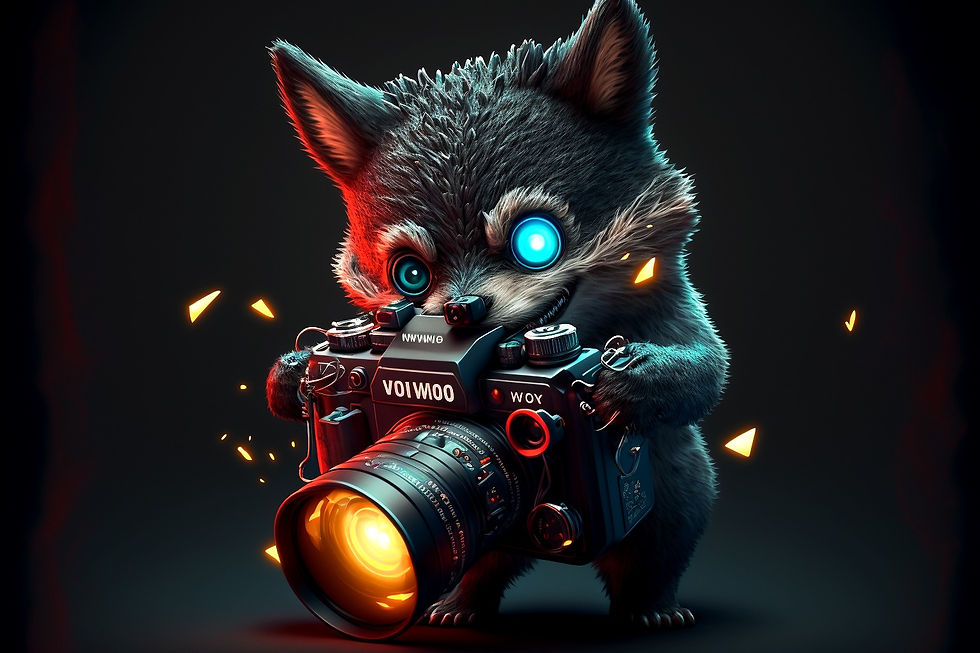Press Button To Blog - Macro/Micro Photography
- PressButtonToSquee
- Jun 9, 2022
- 3 min read
My love for macro photography started at an early age. It all started with me playing with pre-broken toys from Goodwill and setting up elaborate dioramas and scenes on my bedroom floor before taking pictures with old disposable cameras. I would eagerly take the cameras to the back of a pharmacy with crossed fingers, hoping that the pictures would turn out well. They served no purpose other than being evidence of something I had "created". Looking back, it was the excitement of not knowing how the photos would turn out that made it so thrilling. It was a creative gamble that took time to tell if it paid off.
Macro photography is unique because it allows us to see the world from a perspective that humans are not otherwise capable of. With it, we can capture details that the humans cannot discern with the naked eye, and this opens up a whole new world of beauty that we might not have realized existed from our level so high and far from everything that's normally too small to care about.
Of course, the technology required to take micro photographs has come quite far since my days with disposable cameras. Those were never true macro pictures, I just took the photos really close. In fact, today's macro lenses are specifically designed to be able to capture small subjects at a high magnification, so photographers can capture incredible detail in even the smallest of subjects. Additionally, advances in lighting technology, particularly LED ring lights and other specialized lighting, have greatly increased the quality and ease of macro photography.
When it comes to the specific skillset required to take macro photographs, it can be quite different from other types of photography. There's a bit of relearning framing, where to emphasis focus, not to mention the different technical aspects of their camera equipment and understand how it effects the ins and outs of aperture, ISO, and shutter speed. They must also be patient and willing to experiment with different techniques and angles to get the perfect shot.
One of the most challenging aspects of macro photography is capturing images of insects and food. For insects, the photographer must be careful not to frighten or disturb the tiny creature, because even the slightest movement may mean a mandible out of focus, while also dealing with the challenging environment of outdoor lighting if shooting in a natural setting. Food, on the other hand, can be incredibly challenging to capture because it requires a higher attention to detail to showcase its best attributes. A single fry out of place, or an errant hair could ruin an otherwise perfect shot, which would otherwise remain unnoticed in a portrait or other regular photograph. The photographer must carefully set up the shot to exact specifications, paying attention to lighting and angles, while also ensuring the food looks appetizing and appealing (which suprisingly deteriorates fast).
There's an intricacy to it that I just don't find present in most of the other genres of photos. Perhaps that's just my personal preference coming into play. I'm sure photographers who specialize in other styles would argue differently. I think most people like to think of their specialty as being the truly unique option. People search for a sense of purpose and perfection. Nobody wants to do something useless at a poor level of quality. It's natural that we put more effort and care into things that we enjoy. So a nature photographer is going to have a vastly different outlook on his work compared to someone who documents sports, or takes pictures of beautiful models.
Macro photography is a challenging yet rewarding field that allows us to capture the world in ways that are not visible to the human eye. It requires a unique set of skills and techniques, and it can be incredibly frustrating at times, but in the end, it is all worth it to capture the details that make our world so beautiful. Personally, I think the world can do with a little more of that.



